Get a free estimate
If you have questions about our services, plans, or pricing we are here for you. Fill out the form below and we will communicate with you by email (and of course provide you with a free estimate).
DECEMBER 09 2021 / HOME
Lyme disease diagnoses have been steadily increasing in the United States at alarming rates, especially the Maryland, DC, and Virginia area.
Below is a map from the Centers for Disease Control (CDC) which shows reported cases of Lyme Disease in 2001 and 2014.
 |
 |
The trademark rash of Lyme disease is often described as a “bull's-eye” with a round red rash that is dark in the center, and has dark outer edges.
It is formally called Erythema Chronicum Migrans or Erythema Migrans. This rash indicates the early stage of Lyme disease. Because of its growing awareness, many rashes are often mistaken for Lyme disease. Below are a few examples of Lyme disease rashes compared to other common rashes.
1. Erythema Migrans vs. Ringworm
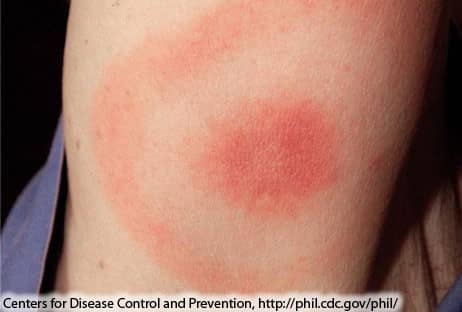 |
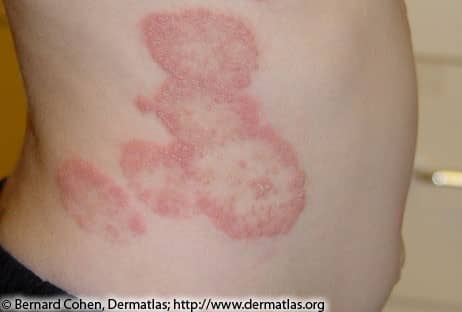 |
To the left is how a Lyme disease rash, Erythema Migrans, usually appears with the trademark circular “bull's-eye” center.
Ringworm is described as a circular rash that often has raised edges. Ringworm is caused by a fungus while Lyme disease is caused by the bacteria Borrelia burgdorferi.
2. Erythema Migrans vs. an Insect Bite Allergic Reaction
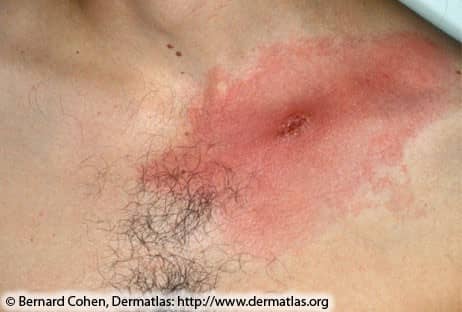 |
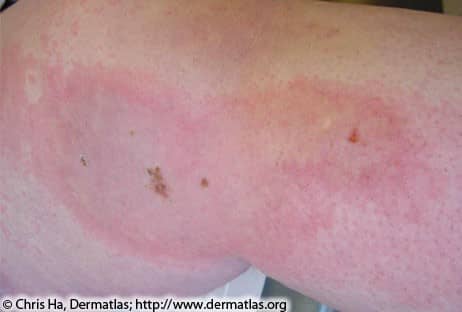 |
This version of Erythema Migrans on the left is slightly different than the characterized “bull's-eye” rash.
It is a spread out rash with a scab in the center.
The insect bite allergic reaction on the right does look similar, but it was described as itchy. Erythema Migrans is mostly described as not itchy or painful, but warm to the touch.
3. Erythema Migrans vs. a Drug Allergic Reaction
 |
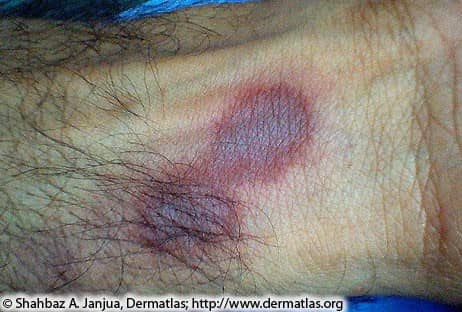 |
The Erythema Migrans rash is usually five to seven centimeters wide, and appears in 4 different forms, the “bull's-eye” being the most popular.
The Erythema Migrans rash pictured to the left appears to be several rashes with lighter centers. The picture to the right is a skin condition that occurs after taking certain medications.
The bruise-like rash often reoccurs in the same spot when the medication is taken.
4. Erythema Migrans vs. a Granuloma Annulare Rash
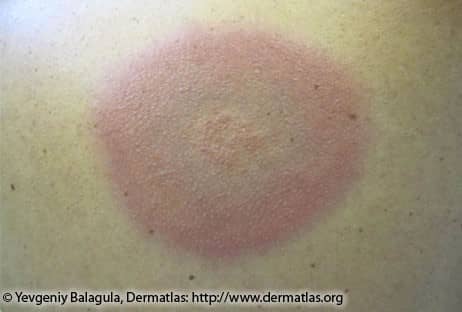 |
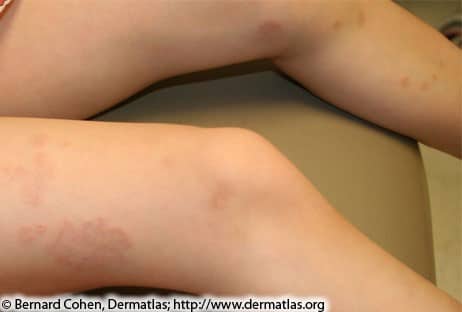 |
This Erythema Migrans rash on the left looks similar to ringworm, but it is an early indication of Lyme disease.
To the right is an example of Granuloma Annulare. It is a rare, chronic skin condition where bumps appear in a circle or a ring. It occurs at any age, but it is more prevalent in females, occurring at an 80 to 20 ratio.
It is seen in healthy people, and also in people with suffering from certain types of lupus, arthritis and thyroid disease. However, there is no current information that links healthy people to others suffering from Granuloma Annulare.
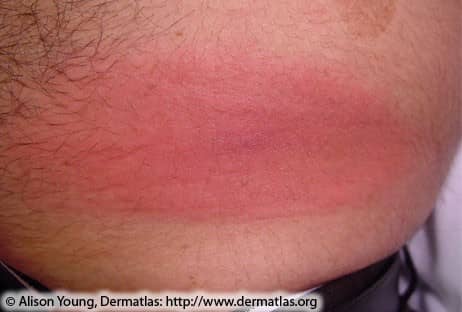 |
 |
This last Erythema Migrans rash on the left is described as a red, oval-shaped rash.
To the right is a condition known as Urticaria multiforme. It is a benign skin reaction seen in pediatric patients that is characterized by light, spread out rashes with lighter centers.
The condition is primarily caused by an interior infection of the body's immune system.
Clearly Lyme disease, isn't going anywhere, and tick borne diseases will continue to develop. Protect your family by keeping ticks away with American Pests many solutions to keep harmful Deer ticks out of your yard.